.
Well, I was going to focus on the magic of Halloween—but I have posted on that topic before, albeit a (relatively) Long Blogging Gal Ago:
All Hallows Eve
Besides which, I figure there'll be very many mighty fine posts on the Halloween topic currently out there in the blogging wilds. Not to mention, that if anyone is looking for Books That Go Bump In The Night, right here on Supernatural Underground is a great place to start—so do check out the excellent authors and reads featured in the sidebar.
 |
So I've decided to hone in on one of my favorite types of magic—'the magic next door', alternatively known as 'the magic of the everyday.'
Of course, the real magic of this brand of fantasy lies in the juxtaposition of the magic with the everyday, usually in what is very recognizably our world. The juxtaposition lies at the heart of urban fantasy and its (almost identical) twin, paranormal fantasy, and is also a vital ingredient of magic realism.
 |
 |
| Bag End |
Similarly, in Tolkien's The Lord of the Rings, the magnitude of subsequent events are juxtaposed with the story's 'everyday' beginnings in the Shire, which is very much a society-next-door. The novel follows a transition, too: from the everyday to the epic; from the Shire to Bree. Much in the same way Lucy, and then her three siblings, transition through the wardrobe.
 |
Today, though, I'm going to focus on three books where the magic is juxtaposed with an everyday that feels very like this world throughout, albeit always told 'slant.'
The Harry Potter Series: The Philosopher's Stone by JK Rowling (1997)
I don't think it's possible to discuss the magic next door and its juxtaposition with the everyday, and not feature Harry Potter—particularly Harry Potter and the Philosopher's Stone, which is where the magic and the worldbuilding for the series are both established.
 |
No world could be more ordinary than Privet Drive, but from the outset and the baby Harry's arrival there, readers know that far-from-everyday elements are in play. The initial glimpse of 'something more' is cemented with the gradual intrusion of magic into the young Harry's life, until his magical invitation to attend Hogwarts is confirmed—and Hagrid introduces him to the magical world juxtaposing the one we all know.
 |
This introduction begins with the wonders of Diagon Alley, from the Leaky Cauldon to Gringotts Goblin Bank, and shopping for back-to-school supplies that includes wands, cauldrons, and owls. And magical juxtapositions would have to go a long way to beat Platform 9 3/4, which while located in the very real King's Cross Station, is accessed by running fil tilt at a brick wall.
 |
| En route to Platform 9 3/4 |
The juxtapositions of the real-world-as we-know-it and magic don't stop when Harry and his friends reach the magical Hogwarts School, but are cemented by the familiar school round of lessons, albeit on magical topics, being sorted into school houses, and sports teams—the very magical quidditch, played on broomsticks.
 |
You already know all this, of course, but since Harry Potter is the quintessence of "the magic next door", it absolutely must be part of this post. :-)
Sunshine by Robin McKinley (2003)
Sunshine is a vampire novel, set in what is recognizably this world—only it's a post-apocalyptic this-world in which, following the Voodoo Wars, humanity must contend with vampires and demons, and where sorcery has become part of everyday life.
 |
Enter Rae Seddon, aka Sunshine, who works as a baker and is distinguished chiefly for her cinnamon-scrolls-of-awesome—until the evening she is kidnapped by vampires and clearly intended to be the dinner for a powerful, and very hungry, captive vampire: Constantine.
Yet Sunshine survives the night and subsequently escapes with Constantine, an event that opens the door onto her own unique power, which centers on channeling sunlight, i.e her nickname is a clue. It also highlights that Constantine is more than just your average vampire.
 |
The story evolves from that point, centered on the cafe, Sunshine's home, and the way the forces aligning against Constantine—and now Sunshine—intrude into both, with her allies including a biker wizard, SOF (Special Other Forces) officers with demon powers, and a mentor who is also a powerful medium.
In short, the supernatural is everywhere but it is Sunshine herself who has shut awareness of it out of her life—and therein lies the unfolding of the tale...
The River Midnight by Lilian Nattel (1998)
In July, I discussed the magic realism of Joanne Harris's Chocolat—and Lilian Nattel's The River Midnight occupies a similar space in the Fantasy spectrum. The magic is a delicate presence, but one that enchants the reader as much as the story's characters and historical setting.
 |
The River Midnight is set in a shetl, a small town with a large, or predominantly Jewish population, in 1890s Poland. The foreground of the story comprises the intertwined lives of its inhabitants, particularly four women who were childhood friends, but have grown apart.
Although containing multiple point-of-view threads, the story centers on Misha, the shetl's midwife and a free and independent spirit. Yet beneath the everyday surface of this particular shetl (the imaginary Blaszka), the reader encounters angels and demons, chiefly in the form of the enigmatic Director and the Traveler. And then there's Misha's own maternal heritage of witchcraft...
 |
If this is the warp of The River Midnight 's magic, the weft is Blaszka's everyday encounters with the supernatural, from ghosts to secret transformations into creatures as seemingly odd as tree frogs—and the life of the village itself, with its flaws, richness of characters and traditions, and warmth of community.
The century is turning, change the juggernaut striding in its wake, and time is a trickster. Yet there's enough magical presence in the story to give destiny a nudge: in short, the telling thereof is magical and mysterious, as well as real.
~*~
Previous Posts In The “Magic In Fantasy” Year:
January 1: Happy New Year – Ushering In A Year of Friends, Fellow Authors, & Magic Systems
January 5: An Interview with AK Wilder – Talking Magic In Her New-Out Crown Of Bones (AMASSIA #1)
February 1: An Interview with T Frohock – Talking Magic In A Song With Teeth & The LOS NEFILIM Series
March 1: An Interview with Courtney Schafer – Talking Magic In The "Shattered Sigil" Series
April 1: An Interview with Kristin Cashore –Talking Magic In Winterkeep & The "Graceling Realm" Series
.
May 1: An Interview With Lee Murray – Talking Magic, the Supernatural & Horror
June 1: An Interview With Amanda Arista – Talking Magic In the MERCI LANARD & DIARIES OF AN URBAN PANTHER Series
July 1: The Magic of Magic In Fantasy -- & A Solstice Shift
August 1: More Magic In Fantasy: Lighting The Spark
Helen Lowe's first novel, Thornspell (Knopf), was published to critical praise in 2008. The second,The Heir of Night (The Wall Of Night Series, Book One) won the Gemmell Morningstar Award 2012, and the sequel, The Gathering Of The Lost, was shortlisted for the Gemmell Legend Award in 2013. Daughter Of Blood (Book Three), was published in 2016 and Helen is currently completing the final novel in the series. She posts regularly on her “…on Anything, Really” blog, monthly on the Supernatural Underground, and tweets @helenl0we


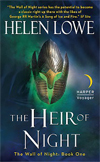
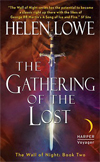
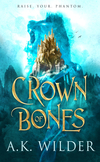
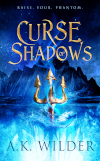
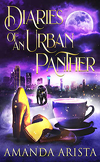
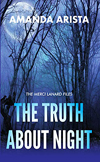

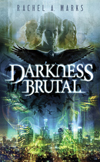
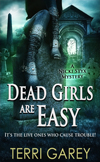
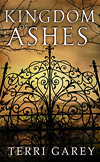
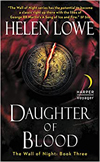
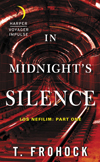

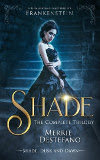

No comments:
Post a Comment